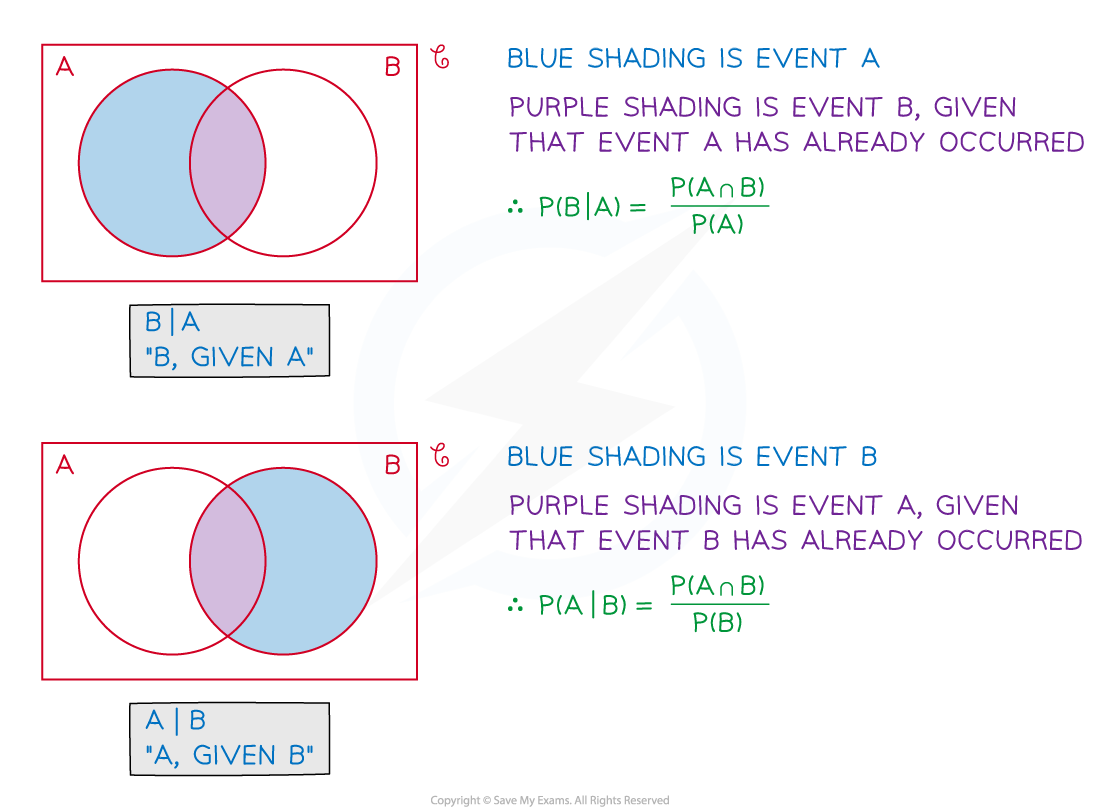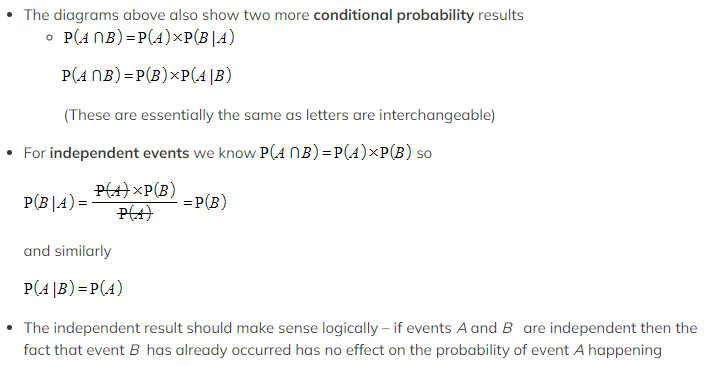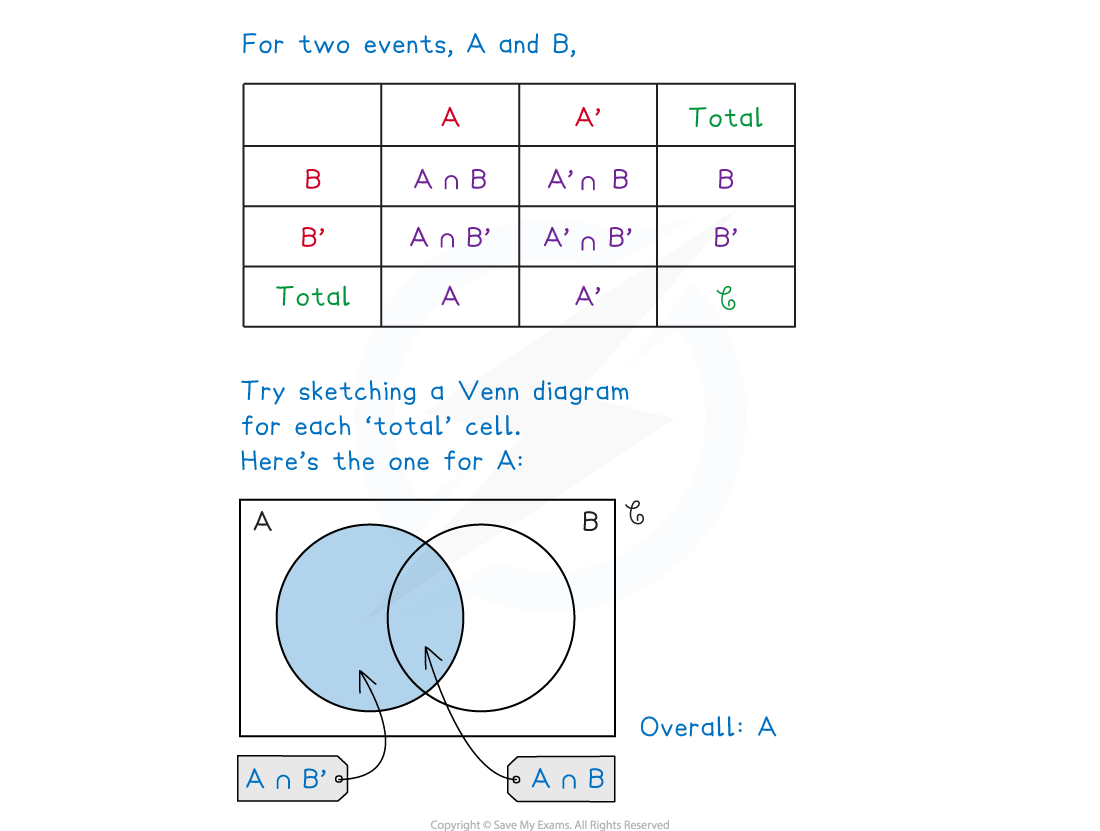- 翰林提供学术活动、国际课程、科研项目一站式留学背景提升服务!
- 400 888 0080
CIE A Level Maths: Probability & Statistics 1复习笔记2.3.1 Set Notation & Conditional Probability
Set Notation
What is set notation?
- Set notation is a formal way of writing groups of numbers (or other mathematical entities such as shapes) that share a common feature – each number in a set is called an element of the set
 How do I solve problems given in set notation?
How do I solve problems given in set notation?
- Venn diagrams lend themselves particularly well to deducing which sets or parts of sets are involved- draw mini-Venn diagrams and shade them

- Practice shading various parts of Venn diagrams and then writing what you have shaded in set notation
- With combinations of union, intersection and complement there may be more than one way to write the set required

Not convinced? Sketch a Venn diagram and shade it in!- In such questions it can be the unshaded part that represents the solution
Worked Example



Exam Tip
 Conditional Probability
Conditional Probability
What is conditional probability?
- You have already been using conditional probability in Tree Diagrams
- Probabilities change depending on the outcome of a prior event
- Consider the following example
 Tree diagrams are great for events that follow on from one another
Tree diagrams are great for events that follow on from one another
-
- Otherwise Venn diagrams are extremely useful
Beware! The denominator of fractional probabilities will no longer be the total of all the frequencies or probabilities shown - “given that” questions usually reduce the sample space as an event (a subset of the outcomes of the first experiment) has already occurred
- Otherwise Venn diagrams are extremely useful
-

 Worked Example
Worked Example


Exam Tip
 Two-Way Tables
Two-Way Tables
What are two-way tables?
- In probability, two-way tables list the frequencies for the outcomes of two events – one event along the top (columns), one event down the side (rows)
- The frequencies, along with a “Total” row and “Total” column instantly show the values involved in finding probabilities

How do I solve problems given involving two-way tables?
- Questions will usually be wordy – and may not even mention two-way tables
 Worked Example
Worked Example
The incomplete two-way table below shows the type of main meal provided by 80 owners to their cat(s) or dog(s).
| Dry Food | Wet Food | Raw Food | Total | |
| Dog | 11 | 8 | ||
| Cat | 19 | 33 | ||
| Total | 21 |
(a)Complete the two-way table
(b)One of the 80 owners is selected at random.
Find the probability
Find the probability
(i)the selected owner has a cat and feeds it raw food for its main meal.
(ii)the selected owner has a dog or feeds it wet food for its main meal.
(iii)the owner feeds raw food to its pet, given it is a dog.
(iv)the owner has a cat, given that they feed it dry food.

Exam Tip
- Ensure any table – given or drawn - has a “Total” row and a “Total” column
- Do not confuse a two-way table with a sample space diagram – a two-way table does not necessarily display all outcomes from an experiment, just those (events) we are interested in
转载自savemyexams

最新发布
© 2025. All Rights Reserved. 沪ICP备2023009024号-1









